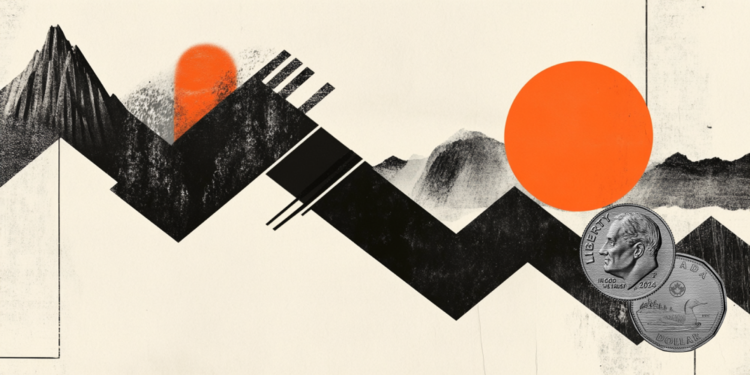- The Canadian Dollar dipped to its lowest value in over two decades.
- Canada immediately hit back against Trump’s import tariffs with their own export tariffs.
- Markets have moderated Loonie selling, but the CAD remains at multi-year lows.
The Canadian Dollar (CAD) plummeted to its lowest bids against the US Dollar (USD) in 21 years at the outset of the trading week after the US and Canada went tit-for-tat on trade tariffs that will pulverize key aspects of both economies. Overall market sentiment recovered ground after Mexico was able to negotiate a one-month ceasefire on US tariffs targeting goods imported from Mexico, but the Loonie is still testing its lowest bids since 2020.
The US imposed a flat 25% import tariff on all goods crossing the border from Canada over the weekend, though US President Donald Trump caved on pressure to reduce tariffs on Canadian-sourced Crude Oil to 10%. Canada immediately responded with their own export taxes on goods and energy sold to the US, daring President Trump to follow through with his threat to double import fees on Canadian goods if Canada retaliated against his tariffs. According to some analysts, the tit-for-tat trade spat between the US and Canada could add another 0.7% to underlying core demand-led inflation in the US.
Daily digest market movers: Trade war 2.0 underway as US bills its own businesses
- The Canadian Dollar hit 1.4800 against the US Dollar for the first time in over two decades.
- Markets have recovered their footing, but USD/CAD is still testing into pandemic highs as market sentiment keeps the Greenback bid.
- A one-month reprieve on the US’ tariffs on Mexico has been granted as Mexican President Claudia Sheinbaum agrees to trade negotiations with President Trump’s cavalcade of appointees with very important jobs but little practical experience. Canada opted to retaliate with export fees on the exact same goods that the US will be charging import taxes on.
- President Trump promised to double tariffs if either Canada or Mexico retaliated.
- Donald Trump’s tariffs are broadly expected to crunch the Canadian economy, as well as contribute to targeted joblessness within the US and contribute meaningfully to core US inflation metrics.
- Jumpstarting inflation and a possible rise in US Crude Oil costs is a poor way to get rate cuts from the Federal Reserve (Fed).
Canadian Dollar price forecast
The Canadian Dollar came within a stone’s throw of 1.4800 against the US Dollar early Monday before markets were able to pump the brakes. The Loonie has recovered some footing after falling to 21-year lows, in tandem with a slight easing in the Greenback.
USD/CAD is still trading into almost five-year highs near the 1.4600 handle as the Greenback accelerates into a sixth straight gaining session against the Loonie. USD/CAD has risen over 10% bottom-to-top from its low of 1.3420 last September.
USD/CAD daily chart
Canadian Dollar FAQs
The key factors driving the Canadian Dollar (CAD) are the level of interest rates set by the Bank of Canada (BoC), the price of Oil, Canada’s largest export, the health of its economy, inflation and the Trade Balance, which is the difference between the value of Canada’s exports versus its imports. Other factors include market sentiment – whether investors are taking on more risky assets (risk-on) or seeking safe-havens (risk-off) – with risk-on being CAD-positive. As its largest trading partner, the health of the US economy is also a key factor influencing the Canadian Dollar.
The Bank of Canada (BoC) has a significant influence on the Canadian Dollar by setting the level of interest rates that banks can lend to one another. This influences the level of interest rates for everyone. The main goal of the BoC is to maintain inflation at 1-3% by adjusting interest rates up or down. Relatively higher interest rates tend to be positive for the CAD. The Bank of Canada can also use quantitative easing and tightening to influence credit conditions, with the former CAD-negative and the latter CAD-positive.
The price of Oil is a key factor impacting the value of the Canadian Dollar. Petroleum is Canada’s biggest export, so Oil price tends to have an immediate impact on the CAD value. Generally, if Oil price rises CAD also goes up, as aggregate demand for the currency increases. The opposite is the case if the price of Oil falls. Higher Oil prices also tend to result in a greater likelihood of a positive Trade Balance, which is also supportive of the CAD.
While inflation had always traditionally been thought of as a negative factor for a currency since it lowers the value of money, the opposite has actually been the case in modern times with the relaxation of cross-border capital controls. Higher inflation tends to lead central banks to put up interest rates which attracts more capital inflows from global investors seeking a lucrative place to keep their money. This increases demand for the local currency, which in Canada’s case is the Canadian Dollar.
Macroeconomic data releases gauge the health of the economy and can have an impact on the Canadian Dollar. Indicators such as GDP, Manufacturing and Services PMIs, employment, and consumer sentiment surveys can all influence the direction of the CAD. A strong economy is good for the Canadian Dollar. Not only does it attract more foreign investment but it may encourage the Bank of Canada to put up interest rates, leading to a stronger currency. If economic data is weak, however, the CAD is likely to fall.
Read the full article here

